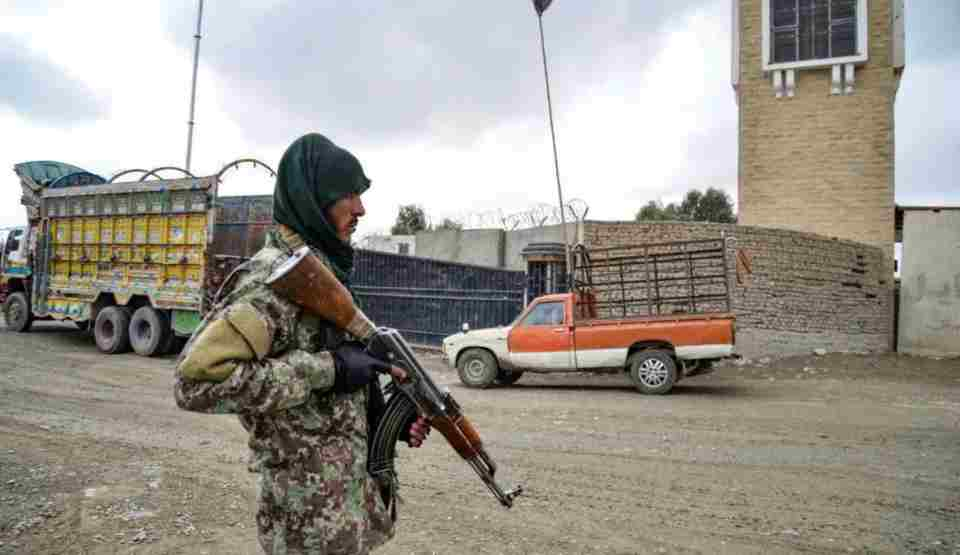Escalating Border Tensions Threaten Regional Stability as Both Nations Trade Accusations
In a dramatic escalation of hostilities along one of Central Asia’s most volatile frontiers, the Taliban government in Kabul has officially acknowledged conducting military operations against Pakistani security forces stationed at several strategic points throughout the rugged mountain terrain that defines the northern reaches of the Pak-Afghan border.

The confirmation, issued through official Taliban government channels, marks a significant intensification of the long-simmering tensions between the two neighboring nations, raising urgent questions about regional security and the potential for further military confrontation.
The Retaliatory Campaign
Taliban officials characterized their military actions as “retaliatory operations,” framing them as a necessary response to what they described as a serious violation of Afghan sovereignty. According to statements from the Taliban government, Pakistani military aircraft breached Afghan airspace on Thursday, conducting aerial bombardments that struck a civilian marketplace situated within Afghan territory. The alleged airstrike, which the Taliban claims targeted non-combatants in a populated commercial area, appears to have served as the immediate catalyst for the subsequent Taliban military response.
The scale and scope of the Taliban’s countermeasures remain substantial, with operations reportedly concentrated across multiple elevated positions in the mountainous border region. These strategic locations, characterized by their difficult terrain and limited accessibility, have historically served as flashpoints for cross-border incidents between the two nations. The choice of multiple simultaneous targets suggests a coordinated military response rather than an isolated reactive skirmish.
At present, casualty figures from these exchanges remain unconfirmed, with neither side releasing comprehensive information about losses sustained by military personnel or civilian populations caught in the crossfire. The absence of clear casualty data has only added to the fog of war surrounding these incidents, making it difficult for international observers to assess the true human cost of the escalating conflict.

Pakistan’s Strong Response
Pakistan’s Interior Minister Mohsin Naqvi swiftly countered the Taliban’s narrative, characterizing the Afghan attacks as entirely “unprovoked” acts of aggression. In a forcefully worded statement that signals Islamabad’s unwillingness to de-escalate without conditions, Naqvi alleged that Taliban forces deliberately targeted civilian populations during their military operations, firing upon non-combatants in border areas.
The Interior Minister’s rhetoric took on particularly ominous tones as he issued what amounts to a direct warning to Kabul’s Taliban leadership. “We will respond with a stone for every brick,” Naqvi declared, employing a traditional idiom that conveys Pakistan’s intention to match any Afghan aggression with equivalent or greater force. This pronouncement effectively puts the Taliban government on notice that further military actions will be met with escalating Pakistani retaliation, raising the specter of a sustained cross-border conflict.
The Underlying Dispute
The current military confrontation represents merely the latest chapter in a deeply rooted and multifaceted dispute that has plagued relations between Islamabad and Kabul for years. At the heart of this ongoing conflict lies Pakistan’s persistent accusation that the Taliban government actively harbors, supports, or at minimum tolerates terrorist organizations that use Afghan territory as a safe haven from which to plan and execute attacks against Pakistani targets.
Pakistani security officials have long maintained that militant groups, particularly factions associated with the Tehrik-i-Taliban Pakistan (TTP) and other extremist organizations, operate training camps, command centers, and logistical networks within Afghanistan’s borders. These groups, Pakistan argues, cross the porous mountainous frontier to conduct deadly attacks on Pakistani soil before retreating to sanctuary in Taliban-controlled Afghanistan, where they remain beyond the reach of Pakistani security forces.
The Taliban government in Kabul has categorically and repeatedly rejected these allegations, denying that it provides any form of support, sanctuary, or operational freedom to terrorist groups targeting Pakistan. Taliban officials have argued that they lack the capacity to fully control all remote border regions and have suggested that any militant activity originates from within Pakistan itself or stems from local grievances rather than Afghan government policy.
Regional Implications
This latest eruption of violence comes at a particularly sensitive moment for regional stability. The international community has watched with growing concern as relations between the two neighbors have deteriorated over recent months, with diplomatic channels showing increasing strain and military incidents becoming more frequent and severe.
The mountainous border region where these incidents have occurred represents some of the most challenging terrain in South Asia—a largely unmapped wilderness of steep valleys, high passes, and remote villages where government authority has historically been tenuous at best. The Durand Line, the controversial colonial-era boundary that officially separates the two nations, has never been fully accepted by successive Afghan governments and remains a source of territorial dispute that complicates efforts at border management and security cooperation.
As both nations dig in their positions and rhetoric grows more heated, regional observers fear that the current crisis could spiral into a protracted military confrontation with devastating humanitarian consequences for border communities already struggling with poverty, displacement, and the legacy of decades of conflict. The international community now faces the urgent challenge of facilitating dialogue between two deeply antagonistic parties before a local border dispute transforms into a full-scale regional crisis.






